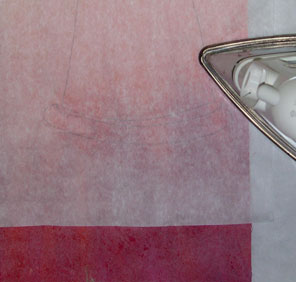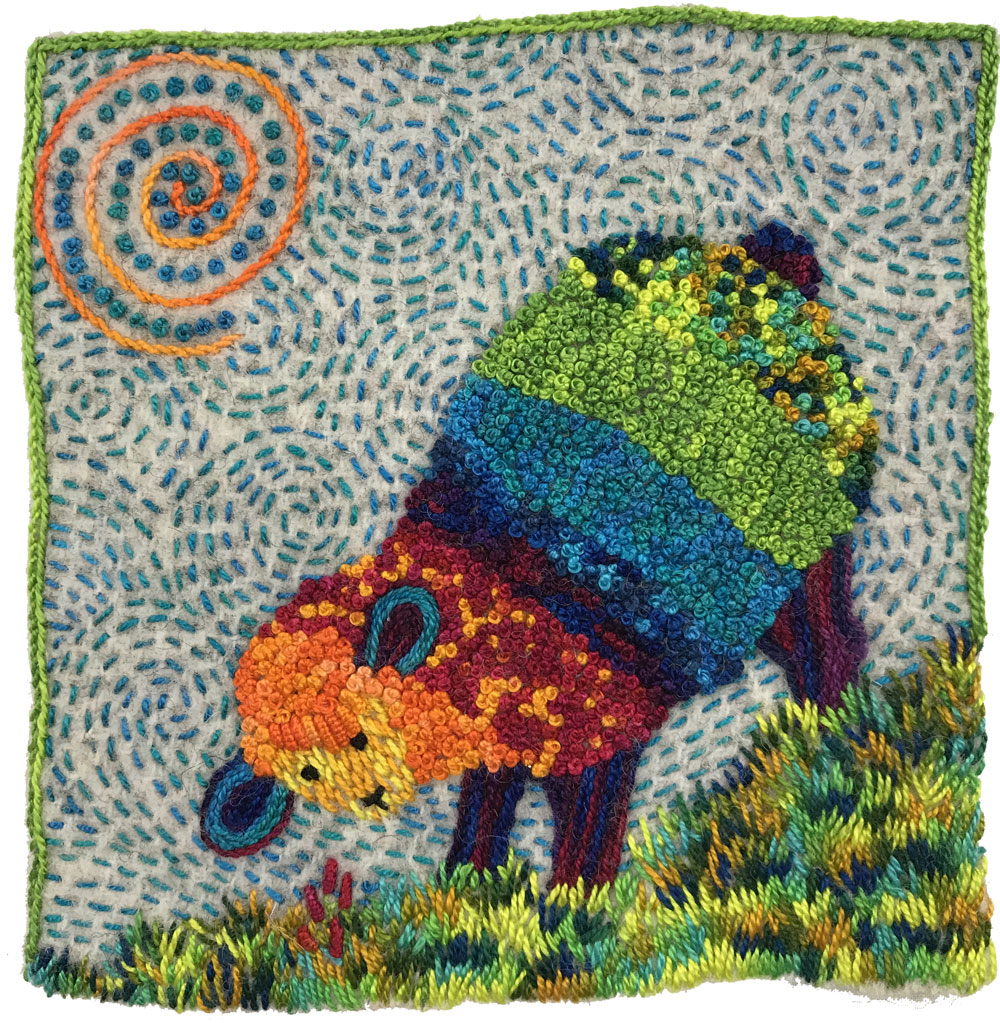
I declare 2024 the Year of the Stitch!
This year I resolve to embroider more and worry less.
This is likely the only resolution I can live up to. I guarantee my other resolutions will dissolve and disappear by January 2. Sigh…..
But onward to the stitching!
Beginning the Year of the Stitch!

My first stitch project of 2024 is this whimsical art quilt measuring about 8 inches wide by 10 inches high. It’s made using my favorite method of construction, improvisation. Cotton fabrics are fused and then free-cut into shapes for the design. It is steam set to wool batting and ready to stitch. This is so exciting!

To begin the hand embroidery I start with the focal point, the house. Blanket stitches outline the door shape with a thread color complementary to the door color. Orange and turquoise, don’t you love it? I’m using a size 12 Oranges pearl cotton thread and a size 5 hand embroidery needle. So far, so good. Next up is more……stitching!
If you’d like to learn how I created this type of quilt, please join my online class, Fused Art Quilts Tiny Homes. And if you’d like to see how this quilt comes alive with hand embroidery please continue to tune into my Year of the Stitch!





